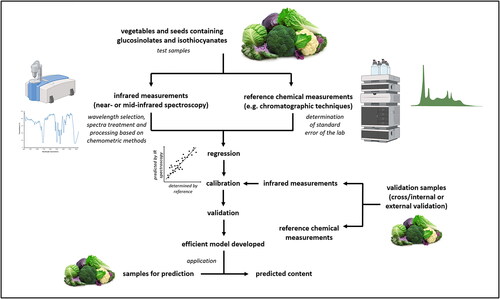Figures & data
Figure 1. General structure of glucosinolates and isothiocyanates and their conversion. The R group is a varying aglycone amino acid-deriving side chain. Glucosinolates can be classified as aliphatic, indolic or aromatic glucosinolates based on the R group.

Figure 2. Development of infrared spectroscopy-based calibration models for determination of compounds as glucosinolates and isothiocyanates. The images used in this figure are copyright free or have been downloaded from BioRender.com.

Table 1. Summary of the NIR calibration models used to determine glucosinolate content in vegetables and oilseeds.
Table 2. Specific wavelengths in the NIR region reported to measure total glucosinolates in leaves and plants as reported by different authors.
Table 3. Specific wavenumbers in the MIR region used to measure isothiocyanate (i.e., NCS group) as reported by different authors.
Table 4. Characteristic bands in the MIR region reported to measure pure glucosinolates and isothiocyanates.
